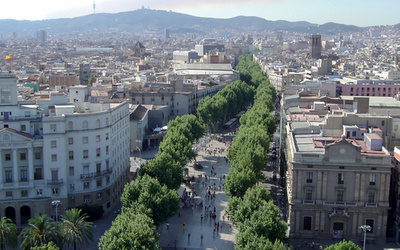We have recently been seeing several efforts to transform suburbs and cities into pedestrian-friendly areas (Paris, Barcelona and Bogotá). We have argued about the importance of looking at parking and traffic with a people-centric approach (Wayfinding Newsletter) and demonstrated its positive impact on transport and traffic. The article Putting People First: 10 Steps Toward Pedestrian Friendly Suburbs by Lynn Richards adds on that discussion. The author suggests the following ways to help suburbs implement people-centric redevelopments:
- Share a Vision and Draft a Plan: the first stage is to identify what are the community vision and priorities. The creation of a plan based on a shared purposed is important to get community engagement and achieve successful outcomes.
- Identify Assets: to determine the focus of the plan it is necessary to identify the available assets, analysing:
- The available public transit (transit stops location and accessibility) in the region.
- The infrastructure budget allocation, considering the priority areas (roads, sewers or schools, for instance)
- Vacant or underutilised areas (parking lots, buildings, malls) near the infrastructure investment which are available for redevelopment. Are these areas currently implementing redevelopment plans? Are they close to other public assets, such as parks or schools? Could they be integrated with emerging employment areas?
- Leverage Infrastructure Investments: local governments can attract private investors by upgrading existing infrastructure or developing new infrastructure. These efforts can result in a 70% to 300% increase in land value rising private investment, tourism and retail activity by 30%.
- Align Codes and Ordinances: analyse and update development regulations such as street standards and parking requirements to allow pedestrian-friendly plans.
- Get the Streets Right: the focus should always be on transporting people effectively and not on moving more cars. Therefore, pedestrian areas need to be safe, inviting and interesting for people.
- Get the Parking Right: assessing the current and forecast parking needs is essential to avoid an oversupply of parking which would lead to unused spaces.
- Add More Green: adding trees, green areas and paths can attract pedestrians and help soften the concrete and asphalt look of many suburbs.
- Change Land Use: together with the redevelopment strategy, it is possible to repurpose abandoned or underperforming spaces such as outdated shopping centres and stores, transforming them into schools, libraries or other public areas addressing the community’s needs.
- Provide Catalytic Leadership: redevelopments demand the involvement of different public entities including transportation, housing and public works departments which may have different approaches and objectives. It is necessary to have a leader capable of mediating, facilitating and leading all the parts involved in the process.
- Anticipate What’s Next: as redevelopment plans can be long it is important to consider some aspects from the beginning:
- Establish measurements for the project accordingly to the plan goals which could be an increase of local retail activity or decrease of car ridership, for instance.
- Develop a plan including different demographic groups and considering the community’s current and future reality.
- Value the local uniqueness respecting identity and architecture.
Photo Credit: Barcelona Turisme

